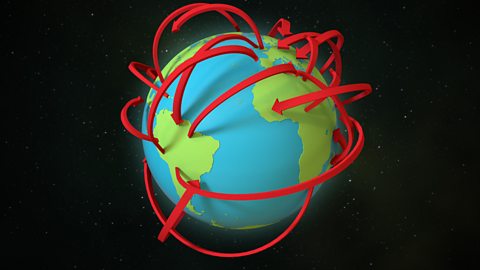Climate change and the greenhouse effect
Evidence suggests that climate change has been happening for over 3 million years and that the Earth has undergone dramatic changes to its climate - varying from the ice ages to periods of considerable warming.
Since the 1850s and the industrial revolutionA period of time during the 18th and 19th century where the UK shifted to becoming a much more industrial country relying more on machinery and the use of coal and oil. the global average temperature has been rising. Many believe that this is down to human activity and the ever increasing use of technology and the burning of fossil fuels to produce energy.
Climate change is driven by a process known as the greenhouse effect. This is where heat is trapped within our atmosphere by naturally occurring gases known as greenhouse gasesGases that absorb radiation and contribute to the greenhouse effect, these consist of water vapor, carbon dioxide, methane and nitrous oxide.. Without the greenhouse effect this heat would not be trapped and the Earth’s temperature would drop to -50°C.
However, human activity has now led to what is known as the enhanced greenhouse effect. By burning more fossil fuels and by clearing more land for uses such as agriculture, we are continuing to add more and more of these greenhouse gases to the atmosphere.
As a result more heat is being trapped and the Earth is warming. According to the IPCCAn intergovernmental body of the United Nations that assesses the science related to climate change. (Intergovernmental Panel on Climate Change), since 1970 the global average temperature has been rising at a rate of 1.7°C per century. This change alone can have drastic impacts on vulnerable communities around the world.
Natural causes of climate change
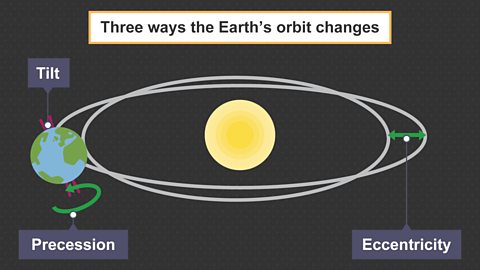
Image caption, Orbital changes - the Earth's natural warming and cooling periods caused by Milankovitch cycles or variations in the tilt and/or orbit of the Earth around the Sun (Wobble, roll and stretch theory).
Image caption, Volcanic activity - during a volcanic eruption carbon dioxide is released into the atmosphere.
Image caption, Solar output - there can be fluctuations in the amount of radiation from the sun. If there is a high amount emitted there will be an increase in Earth's temperatures.
1 of 3
Human causes of climate change
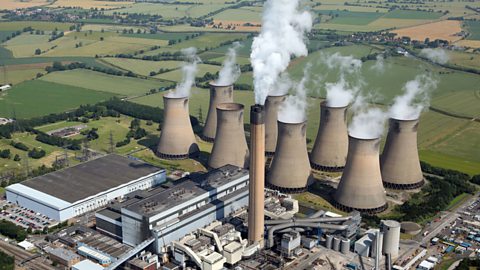
Image caption, Burning fossil fuels, eg coal, gas and oil - these release carbon dioxide into the atmosphere.
Image caption, Deforestation - trees absorb carbon dioxide during photosynthesis. If there are fewer trees, there will be higher levels of carbon dioxide in the atmosphere.
Image caption, Dumping waste in landfill - when the waste decomposes it produces methane.
Image caption, Agriculture - agricultural practices lead to the release of nitrous oxide into the atmosphere.
1 of 4
Impacts of climate change
We are already beginning to see the huge impact climate change is having globally, with an increase in droughts, storms, rising sea levels and warming oceans. These events threaten communities and habitats endangering those that live there.
Maldives
One example where climate change is having an impact is the Maldives. This country is made up of chains of islands or atollA ring-shaped island formed by coral. (250 of which are inhabited) located in the Indian Ocean.
The islands and atolls are all small, flat and densely populated with the highest point being 2.4m above sea level. With the increase in ocean temperatures the Maldives are increasingly threatened by violent storms.
Climate change also threatens the existence of the Maldives with sea levels projected to rise between 10 to 100 centimetres by the year 2100. Malé, the capital, is especially threatened because it is located on a small, flat, extremely densely populated atoll that is surrounded by sea walls, and other barriers to protect against storms. This means that Malé cannot change shape in response to the rising sea levels and is therefore reliant on expensive engineering solutions.
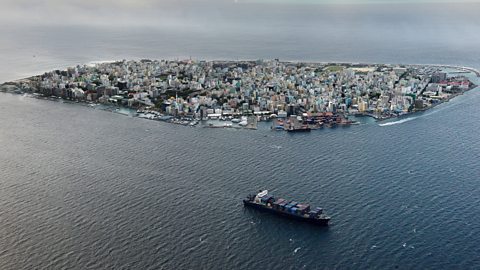
Wales
The impact of a changing climate is also being felt in Wales. Due to rising temperatures, habitats are impacted by more frequent heatwaves and higher rainfall due to storms. In turn, these are affecting the local plants and wildlife.
Rising sea levels, combined with more intense and frequent storms are increasing the risk of flooding and damage in coastal towns such as Aberystwyth.
Farmers also face challenges too. Wales is set to face more rain, warmer temperatures and fiercer storms in future and this will make it more difficult to manage crops effectively and make a living.
Watch: A changing climate
Watch this short clip to understand more about natural and man-made causes of climate change.
I hate to be the bearer of bad news, but the climate is changing. Fast. The climate has always changed naturally, of course. Changes in the earth’s orbit - known as Milankovitch cycles - volcanic eruptions, and fluctuating tidal currents can all cause drastic changes to our planet’s climate.
And then there’s anthropogenic – or man-made – climate change. As we really haven’t been around that long, this is obviously a much more recent phenomenon… and happens on a far quicker scale. CO₂ concentration in the atmosphere has now exceeded 400 parts per million for the first time.
Climate change is having drastic effects on every corner of the planet. Including… Wales.
This is Fairbourne. It was built in the late 19th century as a holiday resort. It thrived at times during the 20th century. But now, in the 21st, it’s disappearing. Being swallowed by the rising tide. There were always tidal defences at Fairbourne. But already, they’re failing. It’s estimated that at some point during the 2050s, Fairbourne will have to be abandoned. Put into a state of what’s called “managed retreat”.
It will probably be the first place in the UK destroyed due to climate change. It’s unlikely to be the last. But we have it relatively easy in Wales. Elsewhere in the world, climate change is having frightening effects.
In Australia, extreme heat and prolonged drought have caused a huge increase in bushfires… destroying the habitat of many of the country’s native species, perhaps forever. Because of this, some have even declared that the koala bear is now “functionally extinct” – that their best hope for survival is now in captivity, rather than in the wild. To the north-east of Australia, some of the Solomon Islands are already disappearing under the waves, like Fairbourne is likely to do in the future.
Mosquitoes, mainly found in Africa, central America, and southern Asia, are migrating due to the hotter climate. Travelling further north and south, and bringing a range of infectious diseases with them. Lovely. But we are fighting back. Honest.
In 2015, Pope Francis called on Catholics, Christians, and all people of good will, to care for the Earth - what many people of faith consider to be God’s creation. In fact, many faiths consider protecting the planet against climate change not as a choice, but a sacred duty. Putting us firmly in the driving seat - or bicycle seat, rather - as stewards of Planet Earth.
Young people in particular are increasingly aware of the threat we face, and are changing the way they live, whether it’s something as small as reusing bags, or as big as going on climate strike.
In Wales, the use of renewable energy is steadily increasing. There are measures in place to discourage the use of cars in cities like Cardiff. By 2050, it’s hoped that we will have reduced our emissions by at least 80%.
So yes, the climate is changing. Fast. And the good news? We’re changing with it.
Dealing with climate change
Dealing with climate change has become a fundamental issue that has been highlighted by scientists and activists across the world. One of the key ways we can manage climate change is by reducing the amount of fossil fuels that we rely on. Recent developments have allowed us to use renewable energy sources in order to cut down the amount of fossil fuels being burnt.
There are different types of renewable energy.
- Water energy - water is used to drive turbines in several ways including waves, tides and falling water in hydroelectric power schemes.
- Solar energy - energy from the Sun is used to generate electricity and to produce hot water.
- Wind energy - wind turns turbines to generate electricity.
- Geothermal energy - the Earth's natural heat is used to heat homes or generate electricity.
In March 2021 Senedd Cymru approved a target of net zeroTo balance the greenhouse gas emissions that are produced with the amount removed from the atmosphere emissions by 2050. This means balancing the greenhouse gas emissions with the amount of gases removed from the atmosphere.
Several goals have been set to achieve this. 43,000 hectares of woodland must be planted by 2030, increasing to 180,000 hectares by 2050. This will play a vital part in removing COâ‚‚ from the atmosphere.
The UK government has decided to ban the sale of new petrol and diesel cars by 2030. They will invest ÂŁ500 million in charging points for electric cars and fund research into battery technology.
More on Change and movement
Find out more by working through a topic
- count1 of 3
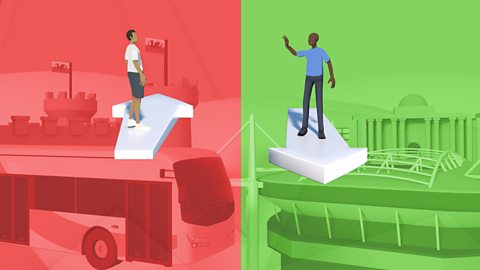
- count2 of 3
